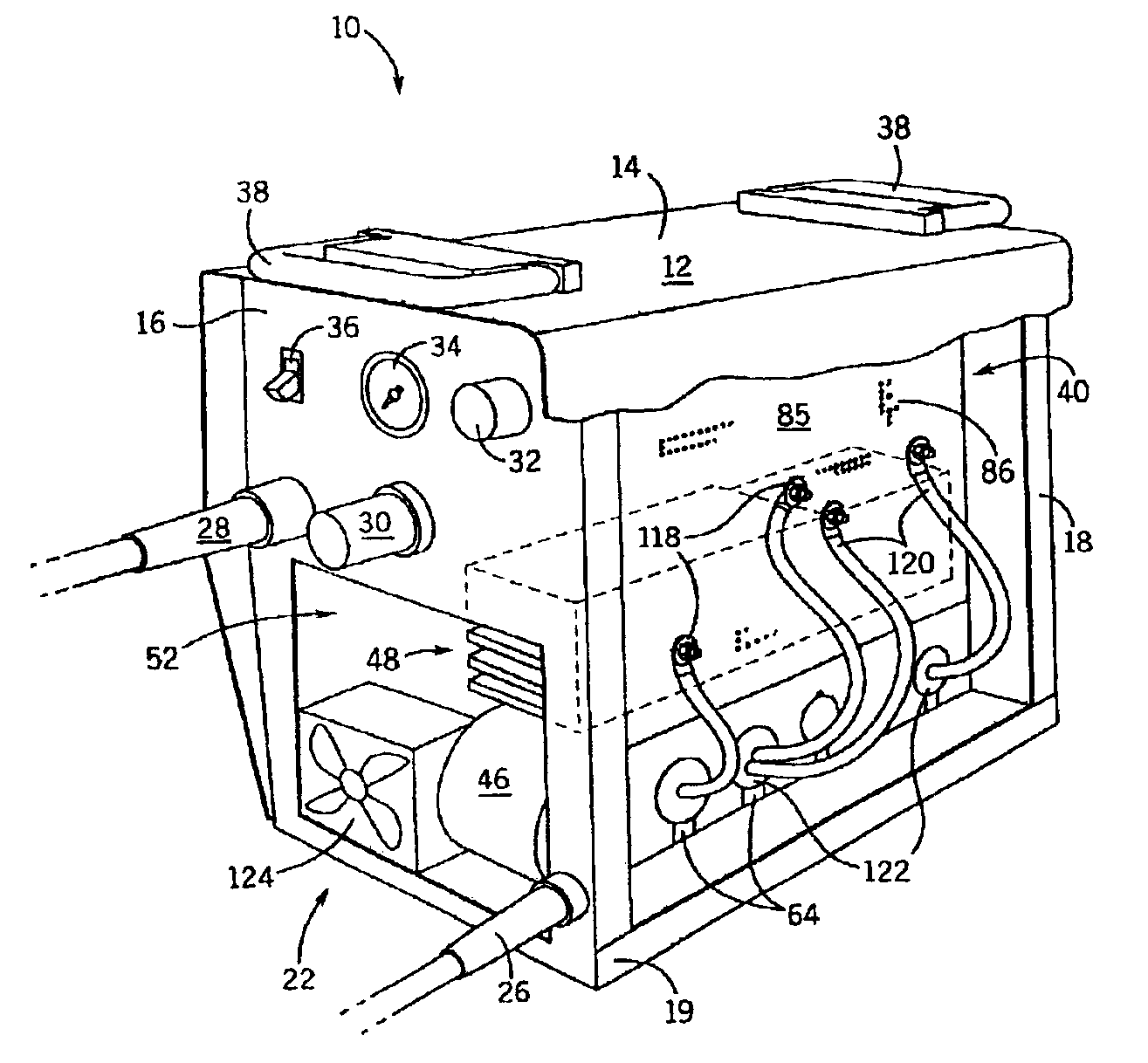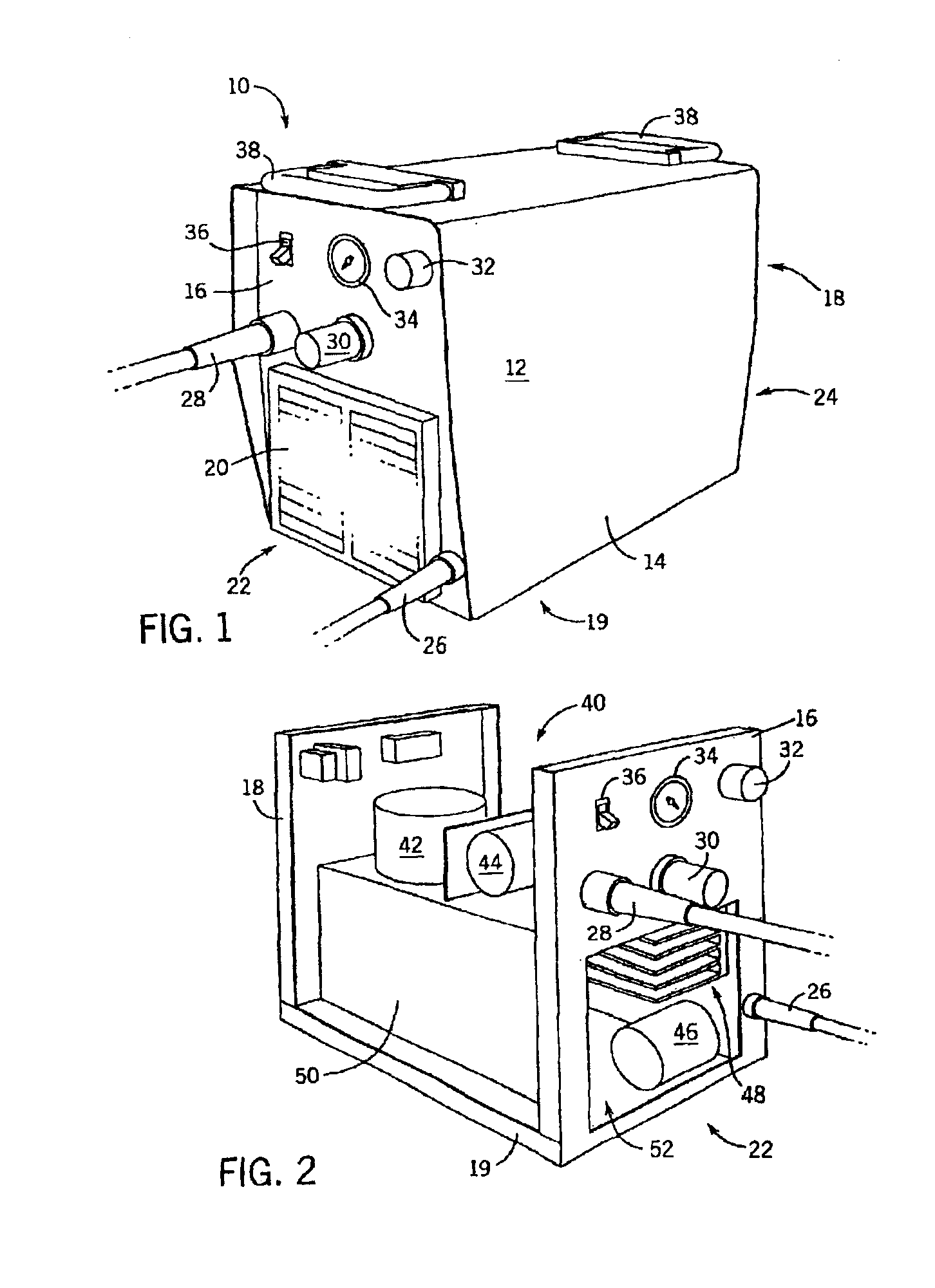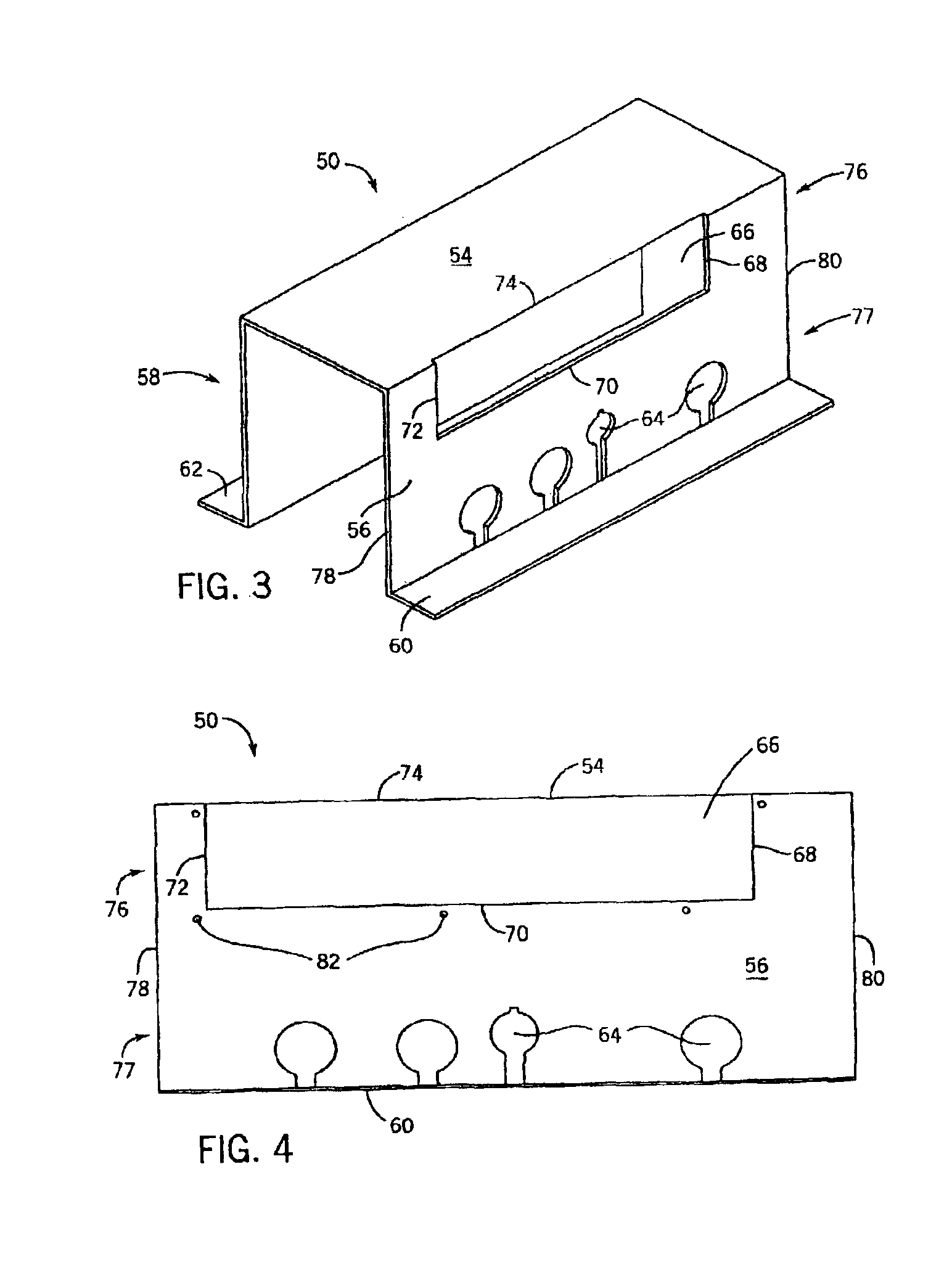Wind tunnel for a welding power supply housing
a wind tunnel and power supply technology, applied in welding accessories, welding apparatus, manufacturing tools, etc., can solve the problems of heavy particulate flow into the interior of the housing, impractical physical attachment to the circuit board, and increased cooling
- Summary
- Abstract
- Description
- Claims
- Application Information
AI Technical Summary
Benefits of technology
Problems solved by technology
Method used
Image
Examples
Embodiment Construction
[0025]FIG. 1 shows a power supply 10 having a housing 12. The housing includes a cover 14, a front end panel 16, a rear end panel 18, and a base panel 19. Both the front and rear end panels 16, 18 include louvered openings 20. The end panels 16 and 18 include the louvered openings 20 to allow air to flow from a cooling inlet 22, through the power supply 10, and through a cooling exit 24. The cover 14 is attached to the front end panel 16, the rear end panel 18, and the base panel 19. FIG. 1 also shows: a welding ground lead 26, a welding power lead 28, a control knob 30, a power selector 32, an output gauge 34, and an on / off switch 36; all located in the front end panel 16. A pair of handles 38 is attached to the cover 14 to aid in moving the power supply 10.
[0026]FIG. 2 shows the power supply 10 of FIG. 1 with the cover 14 removed to expose a first chamber 40. First chamber 40 is the space located between the cover 14, the front end panel 16, the rear end panel 18, and the base pan...
PUM
| Property | Measurement | Unit |
|---|---|---|
| size | aaaaa | aaaaa |
| shape | aaaaa | aaaaa |
| durable | aaaaa | aaaaa |
Abstract
Description
Claims
Application Information
 Login to View More
Login to View More - R&D
- Intellectual Property
- Life Sciences
- Materials
- Tech Scout
- Unparalleled Data Quality
- Higher Quality Content
- 60% Fewer Hallucinations
Browse by: Latest US Patents, China's latest patents, Technical Efficacy Thesaurus, Application Domain, Technology Topic, Popular Technical Reports.
© 2025 PatSnap. All rights reserved.Legal|Privacy policy|Modern Slavery Act Transparency Statement|Sitemap|About US| Contact US: help@patsnap.com



